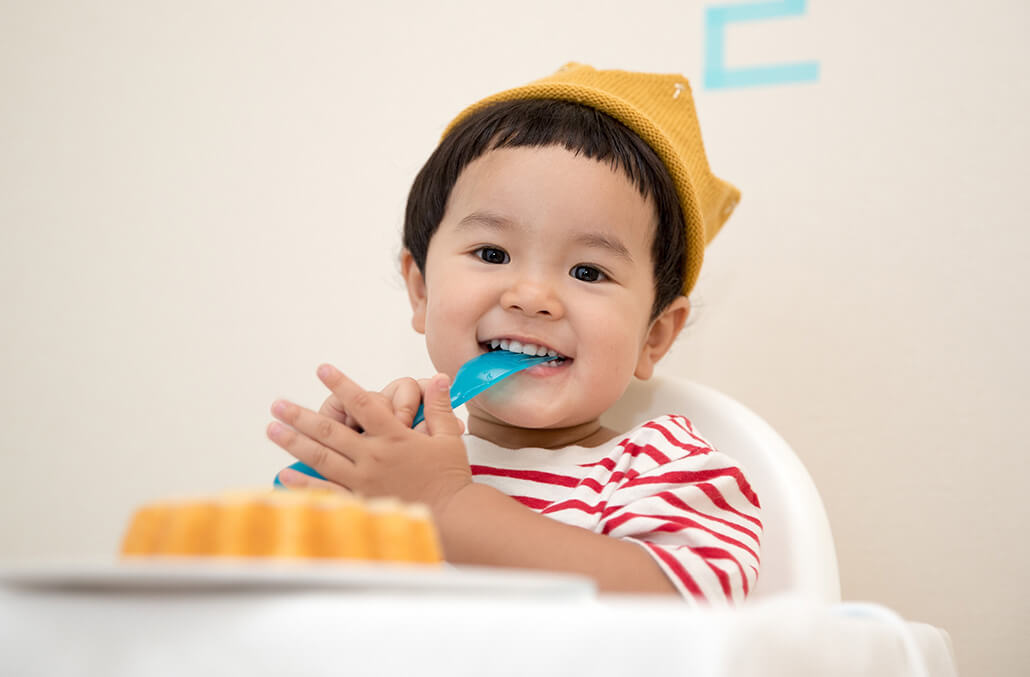Why is Playing with Food Important?
Reading time:
Reading time:

Playing with food is an important part of child development. By playing with their food, children are learning about the world and developing a more relaxed and positive association with a variety of foods. It engages their senses and stimulates their curiosity. They can squish, squeeze, and mold food, helping to develop their fine motor skills and hand-to-eye coordination.
Playing with food also encourages creativity and imagination. Children can use food to build structures, create artwork, or even act out imaginative scenarios. This type of play fosters their cognitive development and problem-solving skills as they experiment with different ways to manipulate and interact with their food.
Furthermore, playing with food can also be a social experience. When children play with their food together, it promotes cooperation, communication, and sharing. They can engage in pretend play and take on different roles, such as a chef or serving food to their “customers.” This type of play enhances their social skills and helps them learn about the importance of sharing.
Children from a young age need to experience a range of textures, flavours and nutrients in their diet. Building familiarity is the first step in helping them accept a wider variety of foods in their diet. A 2002 study[1] found that children’s fruit intake is influenced by the variety and early exposure they had as babies. So, it is important to prioritize familiarity as a daily strategy to achieve dietary variety.
Children learn about food through the things we use when we eat, like bibs, spoons, and plates. They also learn by being around the dining table. As they get used to the food around them, they also get better at eating.
Children can start to build their skills and visual familiarity with a range of flavours using the Little Bellies puff snacks as each product comes in at least two flavor varieties.
We can help babies learn about different tastes by giving them familiar flavours in a few different formats or shapes. Leveraging familiarity with the flavours, we can introduce new shapes and textures.
For example, at 7+ months, parents can give their babies Little Bellies pick-me sticks in strawberry or banana flavours. At 10+ months, they can continue with these flavours in new shapes with Little Bellies softcorn in apple & berry or banana flavours.
To continue with the shape of pick-me sticks at parents can introduce new flavours and texture variations with Little Bellies yogurt pick-me sticks in mango or berry flavours with a roasted carrot and white bean dip or as little croutons on a soup made with creamed corn. There are so many options!
To encourage children to try new foods, include them in meal preparation in a way that builds context. Do they see how food is presented? Do they see how we interact with it? Do they see what other foods it can go with? These show context. The more combinations and modelled behaviours around food they can see, the more context they build.
And like it or not, we all categorize things in our life, including food. We have a category for green food, a category for chewy, a category for crunchy and even a category for “I liked that last time I had it”. So, building familiarity with a range of food group categories is important.
In order to encourage food learning, parents should offer a range of food groups, flavours and textures. Children need a range of foods to meet their iron, calcium, vitamin, mineral and growth requirements.
The Little Bellies range of organic snacks for babies and toddlers offers delicious foods designed to team up well with fruit, vegetables and proteins for a balanced start to a lifelong feeding journey.
Enjoying play opportunities with food to encourage learning and a variety-infused diet is easy with Little Bellies!
[1] Skinner et al. 2002. Do Food-Related Experiences in the First 2 years of Life Predict Dietary Variety in School-Aged Children? Journal of Nutrition Education and Behavior. 34 (6): 310-315.